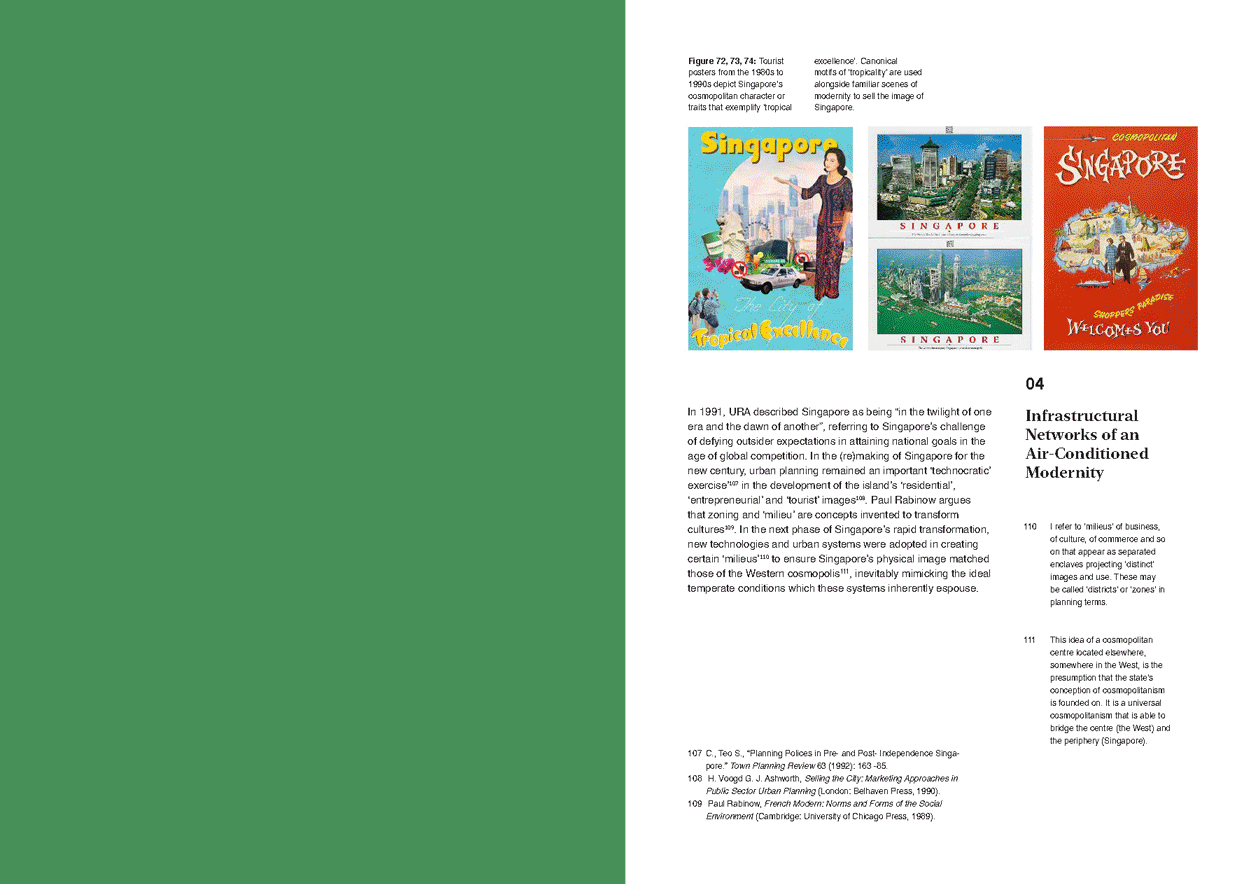Annabelle Tan Kai Lin
A Working Archive of Design, Research and Thoughts
A Working Archive of Design, Research and Thoughts
Past, Present and Post-Tropicality

The research thesis dissects three chronological modes of dominant ‘tropicality’ in Singapore through the lens of modern infrastructure: colonial (British control), post-colonial (nation-building) and contemporary (neoliberal). Crucially, it investigates ‘infrastructures’ of such dominant ‘tropicality’ alongside ordinary people’s lived tropical worlds and their socio-natural relationships, which created an alternative ‘infra-structure’ of tropicality – the radical potential of which is often unnoticed. In doing so, the thesis establishes a catalogue of alternative, subaltern practices, embodied knowledge and material culture, unsettling reductive, neocolonial ‘tropicality’ towards a post-tropical condition.
Infrastructure and Infra-structures
The thesis proposes broadening the study of tropicality from the ‘bigness’ associated with global techno scientific networks, augmentation of landscapes and state infrastructures, to include an overlooked ‘smallness’ of subaltern socio-natural practices, relations and socialities in the everyday. Infrastructure is one of modernity’s tool mobilized by dominant regimes to moderate people’s relationship to ‘tropical-ness’. Yet, other life-worlds are subtly narrated and nested within practices, embodied knowledge and material cultures – collectively termed ‘infra-structures’.
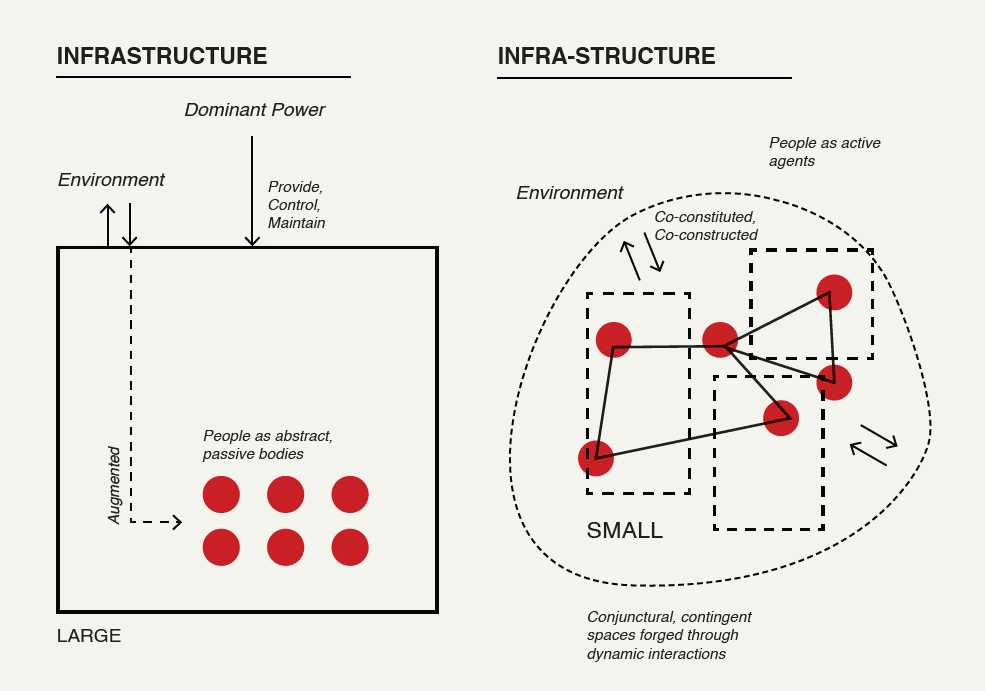
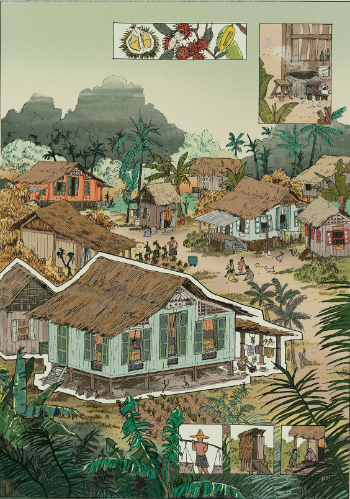
01
Colonial Mode: The ‘Tropical Other’
The tropical ‘other’ emerged during the early colonial settler period and was romanticized in a Saidian orientalist fashion, mixed with images of “Edenic plenitude” and “primitive” hedonism. It was in the second phase of European encounter with the tropics, described by David Arnold as ‘scientific tropicality’, that the tropics became a “torrid zone” where abundance was made troubling in new aspects of heat, humidity and plagues.
Dwelling Beyond Colonial Control
James C. Scott finds metis to be crucial for the ‘political life’ of oppressed groups, which is “found neither in overt collective defiance or power holders nor in complete hegemonic compliance”. This describes the position of the kampung dwellers perfectly: a population that kept out of trouble but were not technically law-abiding in their erection of ‘illegal’ dwellings. Their infra-structures for dwelling within the tropical environment gave them autonomy outside colonial governance, threatening the legitimacy of the latter.
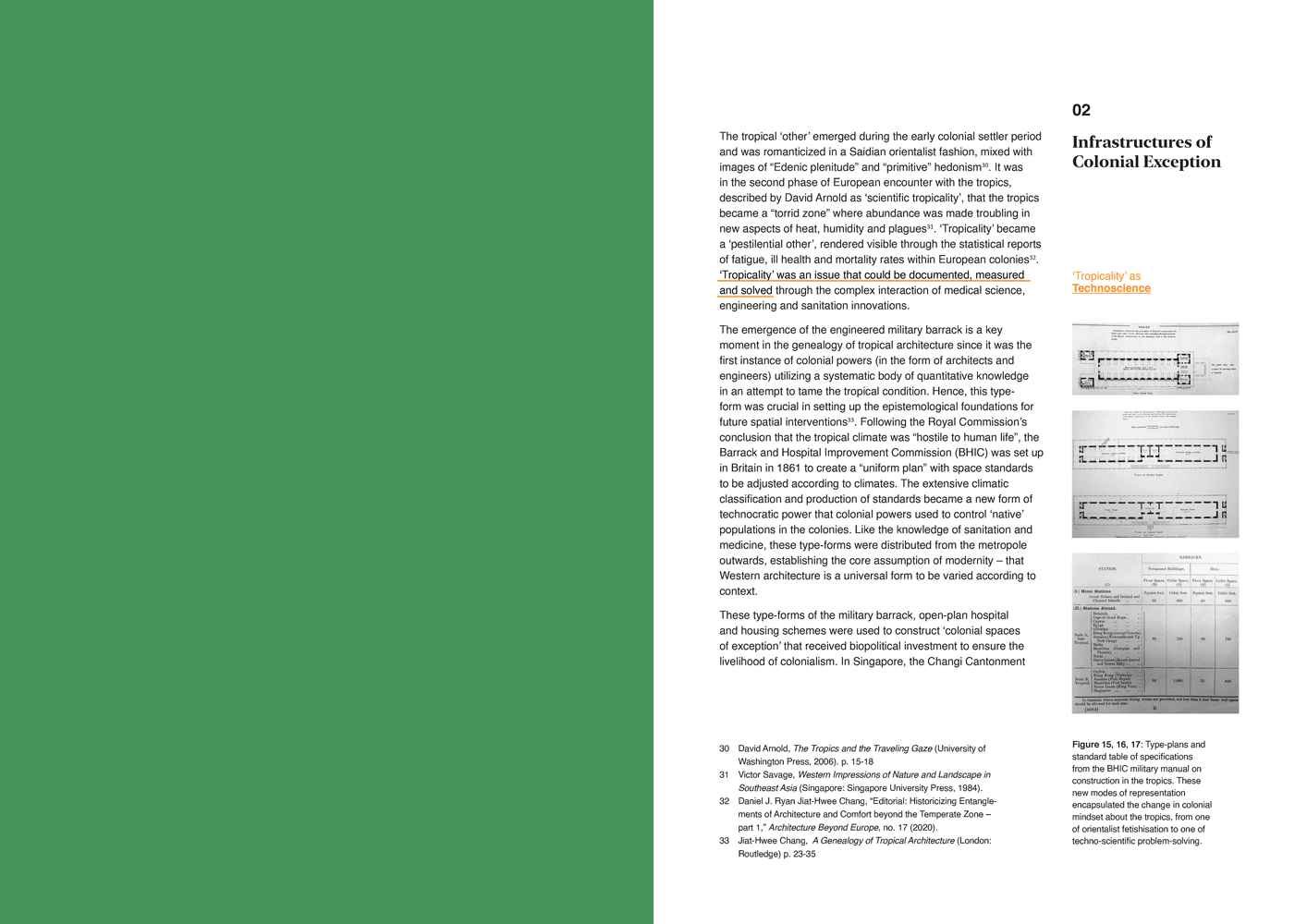

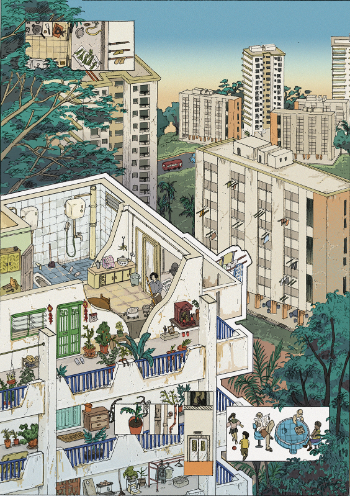
02
Nation-Building Mode: The Garden City
The razing of kampungs and farms, and the subsequent relocation of people into mass housing, must be read as part of the island-wide totalizing infrastructural project undertaken by the developmentalist state. However, the production and consumption of infrastructure is nonetheless deeply embodied in everyday practices and human relations, enabling alternate worlds to persist through creative agency of those who subscribe to anything outside the hegemonic repertoire.
Tropical Modernism as Infrastructural Field
The developmentalist state extended the use of biopolitical infrastructure to a totalitarian degree unprecedented during colonial times, curating private and public spaces and environments towards the creation of “model citizens of a high-modernist nation state”. Singapore public housing effectively integrated marginally-dwelling populations into the socio-economic citizenry of an emerging nation-state. The modern subject was forged through taming subaltern tropicality, using the twin infrastructural instruments of ‘open space’ and machinised housing.
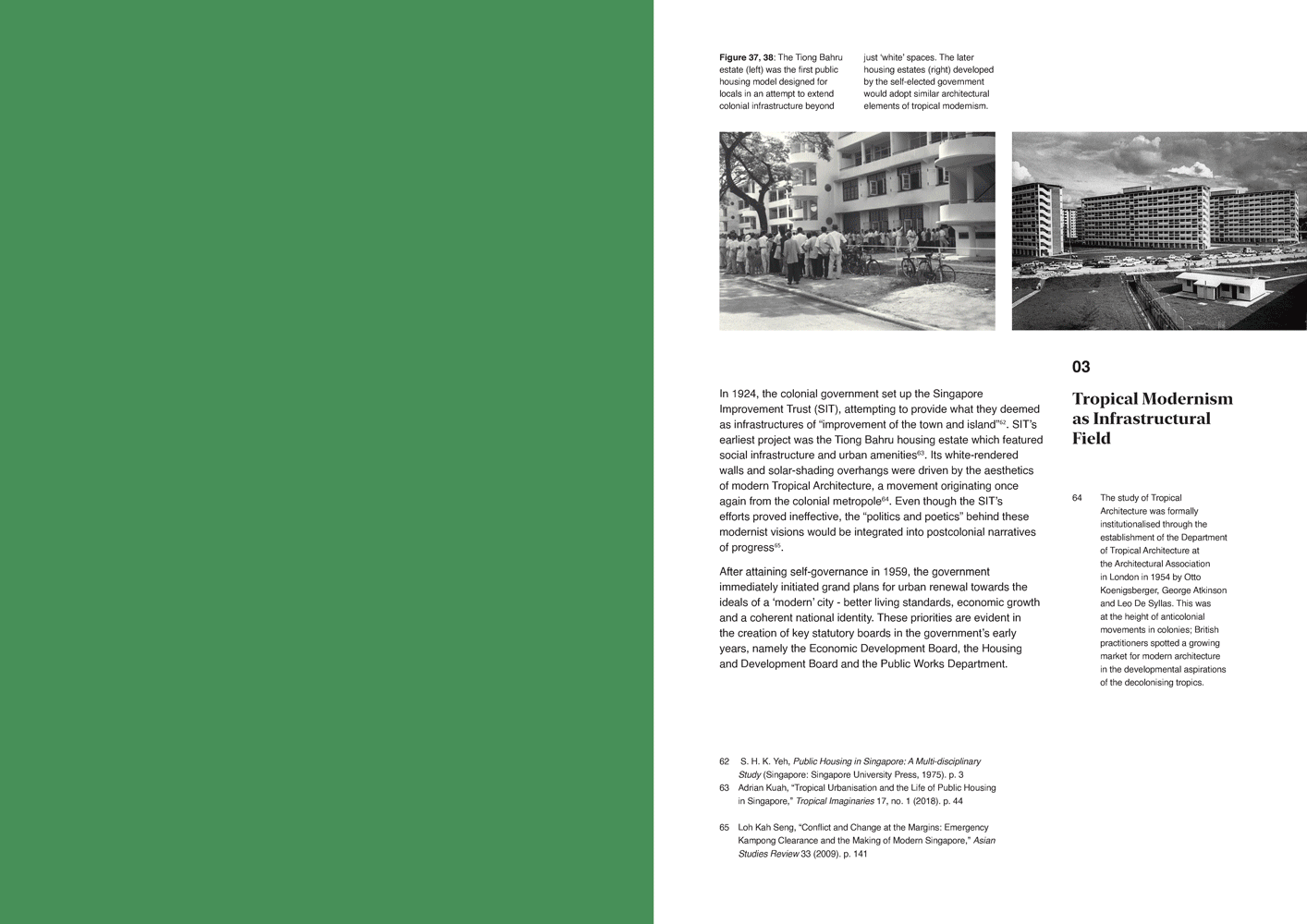


03
Neoliberal Mode: Tropical City of Excellence
In the (re)making of Singapore for the new century, urban planning remained an important ‘technocratic’ exercise’ in the development of the island’s ‘residential’, ‘entrepreneurial’ and ‘tourist’ images. In the next phase of Singapore’s rapid transformation, new technologies and urban systems were adopted in creating certain ‘milieus’ to ensure Singapore’s physical image matched those of the Western cosmopolis, mimicking the ideal temperate conditions which these systems inherently espouse.
Towards a Praxis of Post-Tropicality
As everyday infra-structures of a lived, embodied tropicality are produced and maintained with every rogue sidewalk garden or bucket of collected rainwater, dominant infrastructures of an abstract, universal tropicality are unsubscribed and overwritten. The cataloging, identifying and naming of elements that make up alternative tropicalities aim to articulate a ‘practical-critical’ consciousness that begins to re-explore and re-assemble a life-world that consciously rejects dominant ‘tropicality’, drawing us closer to a post-tropical socio-nature that transcends dichotomies, abstractions and universals.

